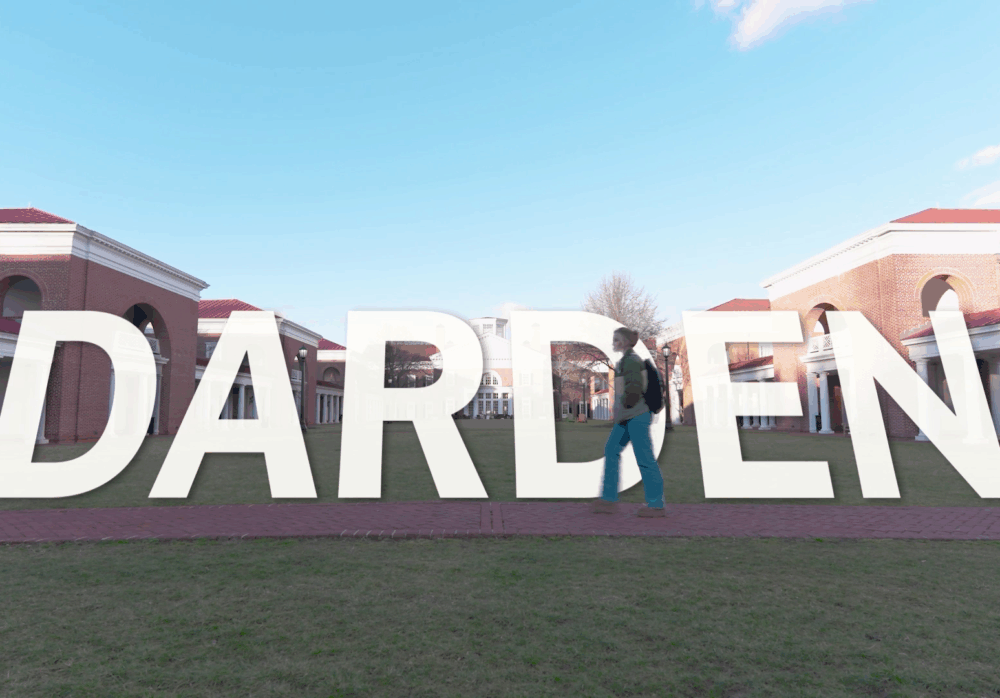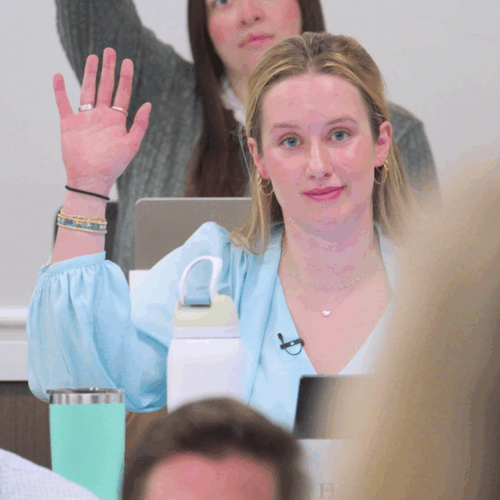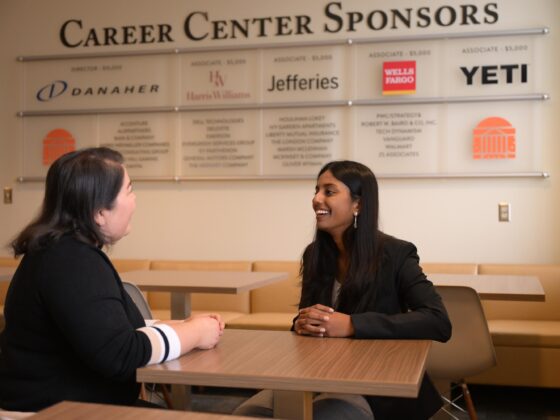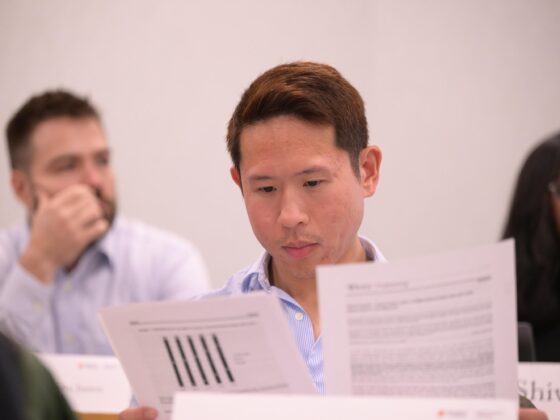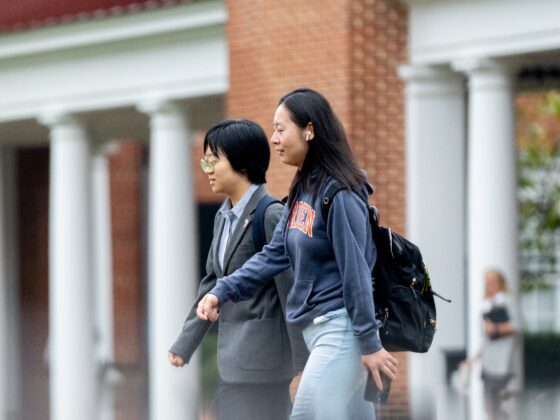If you’ve researched the academic experience at Darden, you’ve probably heard of the case method. But what does it look like in practice?
Grace Hagerty is one of 355 Full-Time MBA students in the Class of 2026. In this new video, she walks us through the process of preparing for class as a First Year Darden student. You’ll see her discussing a case with her learning team the evening before class and being “cold-called” the next morning — a typical day in the life!
(soft music)
- [Grace] It's the night
before my operations class.
I'm on my way to meet with
my learning team to prepare
for a case discussion.
Our whole class will focus on
the inventory decision-making
process for a company called REI
and their ski rental business.
A case study is a real business challenge
that doesn't have a clear right answer.
- Should we get into REI?
- [Student] Yeah, that's fine.
- [Grace] Learning teams
are groups of people
who are put together
with different backgrounds
and job histories.
Working through the case
with my trusted learning
team members allows me
to pitch different ideas
and challenge new
strategies in a safe space
before I get to class.
(soft music)
I get up pretty early.
I want to get a run in
before the day gets started,
so that I can clear my head
and think on my feet throughout the day.
(machine whirring)
In the lecture-based method,
I found that I was really good
at learning all of the facts for the exam,
and then immediately
after the test was taken,
forgetting what I had learned.
The difference with the case study method
is that it's stories, it's experiences,
and you're taking action,
which is so much easier
to remember going forward,
because you lived that experience.
I'm learning how to sit in
situations with ambiguity
or limited sets of information
and make decisions that
I feel confident with
and would stand my ground on.
Every morning we kick off
class with a cold call.
The cold call is when the
professor asks one student,
what is the managerial
decision for the day?
- Section D, how you doing?
- [Students] Awesome.
- We are REI.
We want to try to improve
the rental business.
Grace, how are we going
to try to figure this out?
- We used the queuing model to determine
how many skis
each should have in house
to properly meet demand
and keep the queuing time
or the amount of time
that people have to wait
between when they want their skis
and when they actually get their skis
down to less than a week.
(upbeat music)
The classroom is based
on the Socratic method
where professors help us build
our judgment on what to do
with complex problems.
Each student has to
defend their own answer
against the rest of the class.
This is exactly what we
will be doing every day
in our professional careers
once we leave Darden.
You see that the ideal number of servers
or skis is five moving forward,
which gets you to a
time and queue of 0.19.
- Yeah, I was curious why
you chose, I guess, the .19
and you chose five servers
as opposed to the six.
'Cause the six would take
utilization down 15%,
your time and queue down to .06.
- You got that by just taking the average
of column B, correct?
- Yes.
We didn't pull out the people.
- Yes, neither did we.
What we did though.
- [Grace] The faculty help us get
to a reasonable set of options
and then ask us,
what would you do in their shoes?
When I came to Darden,
I was lacking in confidence
and not a part of the discussions,
and now every single day
I'm working that muscle.
I'm practicing and
becoming a more confident
version of myself.
- Let's thank Grace
for her help with skis.
(students clapping)
Grace explains the case method in her own words: “The classroom is based on the Socratic Method, where professors help us build our judgements on what to do with complex problems. Each student has to defend their own answer against the rest of the class.”
The case method works because it emulates the challenges and business processes that students will face in their careers post-graduation.

